|
Books Should Be Free Loyal Books Free Public Domain Audiobooks & eBook Downloads |
|
|
Books Should Be Free Loyal Books Free Public Domain Audiobooks & eBook Downloads |
|
Science |
|---|
Book type:
Sort by:
View by:
|
By: U. S. Department of the Interior Office of Education | |
|---|---|
 Americans All, Immigrants All
Americans All, Immigrants All
The United States Department of the Interior, Office of Education partnered with the Columbia Broadcasting System to present a series of 26 dramatic radio broadcast programs detailing the role of immigrants in the development of the USA. This small volume was printed as a supplement to the programs. It contains a great deal of the data concerning the contributions of immigrants to the country, often in condensed or tabular form, which were highlighted in the broadcasts. - Summary by Mark Smith | |
By: United States Arms Control and Disarmament Agency | |
|---|---|
 Worldwide Effects of Nuclear War: Some Perspectives
Worldwide Effects of Nuclear War: Some Perspectives
This is a concise yet thorough explanation of what might happen to our world in the aftermath of a nuclear war. The myriad of potential effects will be global and wide-spread, and the potentials are glazed over in this short work. | |
By: United States Department of Energy | |
|---|---|
 U. S. Energy Sector Vulnerabilities to Climate Change and Extreme Weather
U. S. Energy Sector Vulnerabilities to Climate Change and Extreme Weather
This report—part of the Obama Administration’s efforts to support national climate change adaptation planning through the Interagency Climate Change Adaptation Task Force and Strategic Sustainability Planning process and to advance the U.S. Department of Energy’s goal of promoting energy security—examines current and potential future impacts of climate change and extreme weather events on the U.S. energy sector. It identifies activities underway to address these challenges and discusses potential opportunities to enhance energy technologies that are more climate-resilient, as well as information, stakeholder engagement, and policies and strategies to further enable their deployment... | |
By: United States Supreme Court | |
|---|---|
 Supreme Cases from 1803-2018
Supreme Cases from 1803-2018
These cases involved questions that came before the Supreme Court that needed answers. The questions in order of appearance in this project are as follows. Does Congress have the power to pass laws that override the Constitution? What shall we do about the international slave trade? In what respect does the right of an author differ from that of an individual who has invented a most useful and valuable machine? Is there any difference between property in slaves and other property? Can the House of... | |
By: Unknown | |
|---|---|
 The Good Housekeeping Marriage Book
The Good Housekeeping Marriage Book
A collection of articles from Good Housekeeping magazine, The Good Housekeeping Marriage Book focuses on the subject of marriage. With instructions and advice from courtship to raising children, this collection aims to assist those with questions and concerns surrounding marriage and the ensuing relationship. Published in 1938. | |
 Prime Numbers
Prime Numbers
A recording of the first 2000 prime numbers (2-17389). Recommended listening for math fanatics and insomniacs! | |
By: US Army Corps of Engineers, Manhattan District | |
|---|---|
 The Atomic Bombings of Hiroshima & Nagasaki
The Atomic Bombings of Hiroshima & Nagasaki
This is the official report, published nearly 11 months after the first and only atomic bombings in history (to date), of a group of military physicians and engineers who accompanied the initial contingent of U.S. soldiers into the destroyed cities of Hiroshima and Nagasaki. The report presents a clinical description of the devastation, loss of life and continued suffering of the survivors that resulted from the world’s first and only atomic bombings. The appendix is an eyewitness account, contrasting... | |
By: US Comm. for the Global Atmospheric Research Program | |
|---|---|
 Understanding Climatic Change
Understanding Climatic Change
Understanding Climatic Change - A Program for Action is a 1975 report by the US Committee for the Global Atmospheric Research Program. Already at this time, it was understood that a climate change was taking place, and that it was possibly happening due to human influences. The report gives an overview of past climates, a projection of future climate; it talks about state-of-the-art simulations and lays out a plan for future research and action. | |
By: US Global Change Research Program | |
|---|---|
 Fourth National Climate Assessment, Volume II: Impacts, Risks and Adaption in the United States
Fourth National Climate Assessment, Volume II: Impacts, Risks and Adaption in the United States
Are you interested in learning about climate change and its current and future effects on the United States? The Fourth National Climate Assessment – Volume II is a 2018 report written in non-technical language by the U.S. Global Change Research Program, a panel of independent experts, as mandated by the Global Change Research Act of 1990. This report focuses on the human welfare, societal, and environmental elements of climate change and variability in the U.S., with particular attention paid to observed and projected risks and impacts... | |
By: Various | |
|---|---|
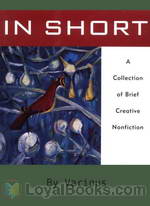 Short Nonfiction Collection
Short Nonfiction Collection
A collection of ten short essays or other short nonfiction works in the public domain. | |
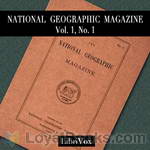 National Geographic Magazine Vol. 01 No. 1.
National Geographic Magazine Vol. 01 No. 1.
National Geographic Magazine Volume 1 Number 1 published in 1889. Topics of articles are:Announcement by the National Geographic SocietyIntroductory Address by the PresidentGeographic Methods in Geologic InvestigationClassification of Geographic Forms by GenesisThe Great Storm of March 11 to 14, 1888The Great Storm off the Atlantic Coast of the United States, March 11th to 14th, 1888The Survey of the CoastThe Survey and Map of Massachusetts | |
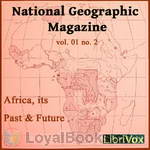 National Geographic Magazine Vol. 01 No. 2
National Geographic Magazine Vol. 01 No. 2
National Geographic Magazine Volume 1 Number 2 published in 1889. Topics of articles are:Africa, its Past and Future Reports on:Geography of the LandGeography of the SeaGeography of the AirGeography of Life | |
 A Book of Natural History
A Book of Natural History
YOUNG FOLKS' LIBRARYA BOOK OF NATURAL HISTORYTHE WONDER OF LIFE, BY PROFESSOR, T. H. HUXLEY. Every one has seen a cornfield. If you pluck up one of the innumerable wheat plants which are fixed in the soil of the field, about harvest time, you will find that it consists of a stem which ends in a root at one end and an ear at the other, and that blades or leaves are attached to the sides of the stem. The ear contains a multitude of oval grains which are the seeds of the wheat plant. You know that when these seeds are cleared from the husk or bran in which they are enveloped, they are ground into fine powder in mills, and that this powder is the flour of which bread is made... | |
 Young Folks' Library
Young Folks' Library
Young Folks' Library, Selections from the Choicest LiteratureTHE MARVELS OF NATURE BY EDWARD S. HOLDEN, M.A., Sc.D. LL.D. The Earth, the Sea, the Sky, and their wonders--these are the themes of this volume. The volume is so small, and the theme so vast! Men have lived on the earth for hundreds of the sands of years; and its wonders have increased, not diminished, with their experience. To our barbarous ancestors of centuries ago, all was mystery--the thunder, the rainbow, the growing corn, the ocean, the stars... | |
 Bomb: The 1945 Test of the First Atomic Bomb
Bomb: The 1945 Test of the First Atomic Bomb
These two publications put out by the U.S. government are about the Trinity site in New Mexico where in 1945 the first atomic bomb was tested. Each publication complements the other, though there is some duplication. These are descriptions of the test itself and of the planning and organization leading up to the test. They also tell what was done with the site after the test and how it became a national historic landmark. - Summary by david wales | |
 Volcanoes and Vulcanology (1885-1917)
Volcanoes and Vulcanology (1885-1917)
This is a collection of short scientific articles on the study of volcanoes and related seismic activity published in Knowledge, A Monthly Record of Science between 1884-1917 - Summary by J. M. Smallheer | |
 Rural Magazine and Literary Evening Fire-Side Vol 1 No 1
Rural Magazine and Literary Evening Fire-Side Vol 1 No 1
This is the first issue of a monthly agricultural magazine for the year 1820. From the introduction: "A leading object of the Rural Magazine will be to furnish correct views of the science of Agriculture, and the various improvements which are daily made or suggested in it. For this purpose the best and most recent European works on the subject will be consulted, and selections made from the American newspapers that are devoted or friendly to the cause. The best information on the subject will thus be condensed in a form less unwieldy than a newspaper, and more popular than in scientific books... | |
 American Bee Journal. Vol. XVII, No. 12, Mar. 23, 1881
American Bee Journal. Vol. XVII, No. 12, Mar. 23, 1881
The American Bee Journal is the “oldest bee paper in America established in 1861 devoted to scientific bee-culture and the production and sale of pure honey. .Published every Wednesday, by Thomas G. Newman, Editor and Proprietor” In this volume are short articles and correspondence on a variety of topics from Royal Jelly to the Honey and Beeswax Market. - Summary by Larry Wilson | |
 Smithsonian Institution - United States National Museum - Bulletin 240 Contributions From the Museum of History and Technology Papers 34-44 on Science and Technology
Smithsonian Institution - United States National Museum - Bulletin 240 Contributions From the Museum of History and Technology Papers 34-44 on Science and Technology
Part of the scholarly and scientific publications of the United States National Museum series: United States National Museum Bulletin.In these series, the Museum publishes original articles and monographs dealing with the collections and work of its constituent museums— The Museum of Natural History and the Museum of History and Technology. These are gathered in volumes, octavo in size, with the publication date of each paper recorded in the table of contents of the volume. Since 1959, shorter papers relating to the collections and research of that Museum have been gathered in Bulletins titled “Contributions from the Museum of History and Technology,”... | |
 American Bee Journal. Vol. VI, No. 4, Oct 1870
American Bee Journal. Vol. VI, No. 4, Oct 1870
The American Bee Journal is the “oldest bee paper in America established in 1861 devoted to scientific bee-culture and the production and sale of pure honey. Published every Wednesday, by Thomas G. Newman, Editor and Proprietor” In this issues are topics from Bee-Culture in Cities to Queen Raising and Breeding. - Summary by Larry Wilson | |
 American Bee Journal, Vol. VI. No. 3, Sept 1870
American Bee Journal, Vol. VI. No. 3, Sept 1870
The American Bee Journal is the “oldest bee paper in America established in 1861 devoted to scientific bee-culture and the production and sale of pure honey. Published every Wednesday, by Thomas G. Newman, Editor and Proprietor” In this issues are topics from Management of Bees in Winter to Artificial Queens, and a special tribute to James T. Langstroth. - Summary by Larry Wilson | |
 American Bee Journal, Vol. VI. No. 5, Nov 1870
American Bee Journal, Vol. VI. No. 5, Nov 1870
The American Bee Journal is the “oldest bee paper in America established in 1861 devoted to scientific bee-culture and the production and sale of pure honey. Published every Wednesday, by Thomas G. Newman, Editor and Proprietor” In this issue are included articles on wintering bees, foulbrood, introducing queens, hives, and reports from Vermont, New York, Illinois, and Massachusetts, among other topics and correspondence. - Summary by Larry Wilson | |
 Nine Biological Lectures
Nine Biological Lectures
Nine lectures on a variety of biological subjects delivered at The Marine Biological Laboratories of Wood's Holl in the summer session of 1895. - Summary by J.M. Smallheer Please note that the Tables in Lecture 9 are not included in the recording. Please refer to the text. | |
 American Bee Journal, Vol. XXXIII, No. 2, Jan 1894
American Bee Journal, Vol. XXXIII, No. 2, Jan 1894
The American Bee Journal is the “oldest bee paper in America established in 1861 devoted to scientific bee-culture and the production and sale of pure honey. Published every Wednesday, by Thomas G. Newman, Editor and Proprietor” In this issues are topics including Foul Brood and Its Propagation, Wintering Bees in the Cellar, Mailing Queen-Bees Long Distances, and a biography of Franklin Wilcox. - Summary by Larry Wilson | |
By: Velley Lester (1871-1926) | |
|---|---|
 Mob Violence and the American Negro: My Experience in the Sunny South
Mob Violence and the American Negro: My Experience in the Sunny South
According to the author of the Preface, "Mr. Lester is also zealous to bring about a better relation and a better understanding between the white and black races. His denunciation against mob violence is bitter, but pleads for just treatment and a fair deal in court and equal protection from the authorities of the law." | |
By: Vernon Kellogg (1867-1937) | |
|---|---|
 Insect Stories
Insect Stories
These 13 essays explore the fascinating world of insects all around us. Vernon Kellogg, an eminent entomologist and natural story teller, and his little friend Mary, start by collecting Tarantula Holes and proceed to observe spiders, ant lions, ants, wasps and many other tiny creatures in their daily life. Each creature has a wonderful story and it is told most entertainingly. | |
By: Victor Appleton | |
|---|---|
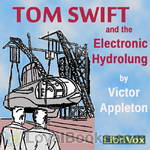 Tom Swift and the Electronic Hydrolung
Tom Swift and the Electronic Hydrolung
The US Government is very smartly letting Tom Swift Jr. handle the recovery of its probe to Jupiter. But a mystery missile suddenly intercepts the probe and splashes it in the South Atlantic.Faced with a huge search task to find the probe on the ocean bottom, Tom soon realizes that the same shadowy group that attacked the probe is competing to find it, and no holds are barred: kidnap, coercion, and lethal force are all in play.Under such circumstances, what can Tom do? What he does every time, of course! He invents some utterly cool device to get the job done! And his Electronic Hydrolung is just the beginning! | |
 Tom Swift and His Sky Racer
Tom Swift and His Sky Racer
A $10,000 prize lures Tom into competing at a local aviation meet at Eagle Park. Tom is determined to build the fastest plane around, but his plans mysteriously disappear, which means Tom must redesign his new airplane from the beginning. | |
By: W. E. B. Du Bois (1868-1963) | |
|---|---|
 Philadelphia Negro: A Social Study
Philadelphia Negro: A Social Study
In November, 1897, I submitted to the American Academy of Political and Social Science a plan for the study of Negro problems. This work is an essay along the lines there laid down, and is thus part of larger design of observation and research into the history and social conditions of the transplanted Africans. W.E.B. Du Bois At the end of this work are appendices, mainly additional statistics and not included here--the most noteworthy of them being Appendix B, a list of legislation regarding the Philadelphia Negro during this period. | |
By: W. Mattieu Williams (1820-1892) | |
|---|---|
 The Chemistry of Cookery
The Chemistry of Cookery
This book, written in the late 1800s, is a book of chemistry that explains the whys and hows of cooking to trained chefs and laymen alike. The book deals with some compounds of common foodstuffs, like albumen or gluten, and illustrates what happens from a chemist's point of view during certain types of food preparation like roasting, frying, or stewing. A part of the chapters also details adulterations of food - thankfully since outlawed - and how to detect them in the finished product. | |
 Science in Short Chapters
Science in Short Chapters
This is a collection of articles written by W. Mattieu Williams on different subjects, that in his opinion "are likely to be interesting to all readers who are sufficiently intelligent to prefer sober fact to sensational fiction, but who, at the same time, do not profess to be scientific specialists." This book offers and intriguing glimpse into the scientific ideas of late 19th century. Though nowadays these essays should not be seen as wholly scientifically accurate, they are still entertaining and in many basic aspects remain truthful. - Summary by Kikisaulite | |
By: W.G. Aitchison Robertson (d. 1946) | |
|---|---|
 Aids to Forensic Medicine and Toxicology
Aids to Forensic Medicine and Toxicology
A 1922 source-book for British criminal pathologists, this will be of particular interest to fans of popular police forensics television shows, films, and murder mysteries. | |
By: Walter A. Wyckoff (1865-1908) | |
|---|---|
 Workers - An Experiment in Reality: The East
Workers - An Experiment in Reality: The East
A young scholar, recently graduated from Princeton College, travels across the United States as a member of the working class, taking any job he could find, enduring hardships and struggling to make a living. He travelled mainly on foot, designing for himself a social experiment on experiencing different class and culture structures and the reality of working conditions at the end of the 19th century. This volume covers the Eastern part of the United States. - Summary by Phyllis Vincelli The second volume The Workers - An Experiment in Reality - the West covers the Western part of the United States. | |
 Workers - An Experiment in Reality: The West
Workers - An Experiment in Reality: The West
A young scholar, recently graduated from Princeton College, travels across the United States as a member of the working class, taking any job he could find, enduring hardships and struggling to make a living. He travelled mainly on foot, designing for himself a social experiment on experiencing different class and culture structures and the reality of working conditions at the end of the 19th century. This volume continues the story that began in the first volume , and spans the region from Illinois to California - Summary by Phyllis Vincelli | |
By: Walter Libby (1867-1955?) | |
|---|---|
 Introduction to the History of Science
Introduction to the History of Science
A highly accessible introductory history of the development of scientific thought, method, and application from the first practical concepts of time and space to the development of the first successful heavier-than-air flying machine and the discovery of radioactivity . - Summary by Steven Seitel | |
By: Walter W. Bryant (1865-1923) | |
|---|---|
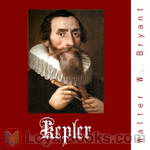 Kepler
Kepler
This biography of Johannes Kepler begins with an account of what the world of astronomy was like before his time, then proceeds to a look at his early years. Two chapters deal with his working relationship with Tycho Brahe. These are followed by a look at Kepler's laws and his last years. | |
 History of Astronomy
History of Astronomy
In this book, Walter W. Bryant traces the history of astronomy through the ages. We start at the very beginning, where astronomy was an occupation of priests, move with the help of the Arabs through the middle ages to the discovery of the heliocentric system by Copernicus, Brahe, Kepler, and Galileo. A discussion of Newton and his laws follows as well as a description of the biographies and works of successors like Halley, Herschel, and Bessel. The second half of the book deals with recent discoveries with respect to our solar system and the comets, meteors, and stars beyond. | |
By: Ward McAllister (1827-1895) | |
|---|---|
 Society as I Have Found It
Society as I Have Found It
Mark Twain illustrator Dan Beard recalled discussing McAllister’s book with Twain. “It was before Webster & Company failed that Ward McAllister’s book appeared, and when he sauntered into my studio one day, I said: ‘Mr. Clemens, have you read Ward McAllister’s book?’ ‘Yes; have you?’ he replied. ‘Indeed, I have. I have read it through several times, and intend to read it again. It is one of the most humorous books I ever read.’ ‘That’s so,’ said Mark, ‘that’s so... | |
By: Ward Moore (1903-1978) | |
|---|---|
 Greener Than You Think
Greener Than You Think
Do remember reading a panic-mongering news story a while back about genetically engineered “Frankengrass” “escaping” from the golf course where it had been planted? That news story was foreshadowed decades previously in the form of prophetic fiction wherein a pushy salesman, a cash-strapped scientist, and a clump of crabgrass accidentally merge forces with apocalyptic consequences. A triple-genre combo of science fiction, horror, and satire, Greener Than You Think is a forgotten classic that resonates beautifully with modern times. This is a faithful reading of a 1947 first edition text. | |
By: Warner Van Lorne | |
|---|---|
 Wanted – 7 Fearless Engineers!
Wanted – 7 Fearless Engineers!
A great civilization’s fate lay in Dick Barrow’s hands as he led his courageous fellow engineers into a strange and unknown land. None of them knew what lay ahead–what dangers awaited them–or what rewards. But they did not hesitate because the first question asked them had been: “Are you a brave man?” | |
By: Washington Irving (1783-1859) | |
|---|---|
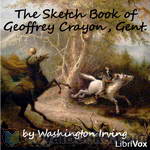 The Sketch Book of Geoffrey Crayon, Gent.
The Sketch Book of Geoffrey Crayon, Gent.
Apart from "Rip Van Winkle" and "The Legend of Sleepy Hollow" - the pieces which made both Irving and The Sketch Book famous - other tales include "Roscoe", "The Broken Heart", "The Art of Book-making", "A Royal Poet", "The Spectre Bridegroom", "Westminster Abbey", "Little Britain", and "John Bull". His stories were highly influenced by German folktales, with "The Legend of Sleepy Hollow" being inspired by a folktale recorded by Karl Musaus. Stories range from the maudlin (such as "The Wife" and... | |
By: Westinghouse Electric and Manufacturing Company | |
|---|---|
 Silent Sentinels: Protective Relays for A-C and D-C Systems
Silent Sentinels: Protective Relays for A-C and D-C Systems
Possibly the first book concerning the protective relays and schemes used in the generation, transmission, and distribution of electric power. While the technology has changed over the last century, incredibly much of the fundamental theory remains the same. - Summary by Rick Jay | |
By: William A Alcott (1798-1859) | |
|---|---|
 Young Woman's Guide to Excellence
Young Woman's Guide to Excellence
Much of this guide for young women is still valuable today. Despite mentions of tight lacing and other out of date matters, it contains many timeless principles. (Bria Snow) | |
By: William A. Sinclair (1858-1912) | |
|---|---|
 Aftermath of Slavery
Aftermath of Slavery
This work describes conditions and forces the black population of the South faced after freedom was brought by the Civil War. As Sinclair puts it at the outset of his book, ". . . the chief efforts of Southern leadership have been to curtail the freedom of the colored people, to minimize their liberty and reduce them as nearly as possible to the condition of chattel slaves." - Summary by Jim Locke | |
By: William Booth (1829-1912) | |
|---|---|
 In Darkest England and the Way Out
In Darkest England and the Way Out
William Booth was the founding General of the Salvation Army in late nineteenth century England. Finding his salvation as a teenager, he went on to become one of the most controversial and, ultimately, well-loved and respected social reformers of his day. Published in 1890 amidst the turmoil of the death of his beloved wife, Catherine, “In Darkest England” was hailed as a revolutionary approach to coping with the social ills facing Great Britain at the time. Although 130 years old, this revolutionary book of Victorian England still has much to say of note today. - Summary by Tom Hirsch | |
By: William Carpenter (1830-1896) | |
|---|---|
 One Hundred Proofs That the Earth Is Not a Globe
One Hundred Proofs That the Earth Is Not a Globe
A bit of pseudo-science that will baffle, confuse, and amaze! Until the Space Age, there was little every-day, self-evident proof that the earth was a globe, and plenty of people believed in a flat Earth. Here are 100 short arguments for a flat Earth. Some of them can be proven wrong fairly easily; others confound; and others are stated so confusingly that they MUST be true! - Summary by TriciaG “‘One Hundred Proofs that the Earth is Not a Globe,’ by William Carpenter, is published by the... | |
By: William Clark Russell (1844-1911) | |
|---|---|
 The Frozen Pirate
The Frozen Pirate
Sailing adventure with storms, icebergs, shipwrecks, treasure, and the reawakening of a pirate frozen in suspended animation for nearly fifty years | |
By: William Drake Westervelt (1849-1939) | |
|---|---|
 Legends of Old Honolulu
Legends of Old Honolulu
Hawai'i: land of wonder and beauty and a culture rich in history and mythology. Dr. Westervelt settled in Hawai'i as a young man and collected stories and myths from his adopted home. Here we have a collection dedicated to the largest city, Honolulu. - Summary by Lynne Thompson | |
By: William E. Barton (1861-1930) | |
|---|---|
 Life of Clara Barton - Volume 1
Life of Clara Barton - Volume 1
Clarissa Harlowe Barton was a pioneering American nurse who founded the American Red Cross. She was a hospital nurse in the American Civil War, a teacher, and a patent clerk. Since nursing education was not then very formalized and she did not attend nursing school, she provided self-taught nursing care. Barton is noteworthy for doing humanitarian work and civil rights advocacy at a time before women had the right to vote. She was inducted into the National Women's Hall of Fame in 1973. Volume 1 ends during the years just after the end of the Civil War. | |
 Life of Clara Barton - Volume 2
Life of Clara Barton - Volume 2
Clarissa Harlowe Barton was a pioneering American nurse who founded the American Red Cross. She was a hospital nurse in the American Civil War, a teacher, and a patent clerk. Since nursing education was not then very formalized and she did not attend nursing school, she provided self-taught nursing care. Barton is noteworthy for doing humanitarian work and civil rights advocacy at a time before women had the right to vote. She was inducted into the National Women's Hall of Fame in 1973.Volume 2... | |
By: William H. Councill (1848-1909) | |
|---|---|
 Negro Laborer: A Word to Him
Negro Laborer: A Word to Him
William H. Councill, former slave and contemporary of Booker T. Washington was founder of Huntsville Normal School, now Alabama Agricultural and Mechanical University in Normal, Alabama. This short volume consists of short pieces of advice to the Negro workers of his time with some statistical information at the end. Councill reflects many of the attitudes and opinions of his time. | |
By: William Hanna Thomson (1833-1918) | |
|---|---|
 Brain and Personality, or the Physical Relations of the Brain to the Mind
Brain and Personality, or the Physical Relations of the Brain to the Mind
One of the earlier works on brain science, relating what was then known or conjectured about the connection between the physical brain and the individual personality, including the ability of speech and language. As this is an early work , some of the information related is, of course, outdated; but much of it is still relevant today. | |
By: William Harmon Norton (1856-1944) | |
|---|---|
 The Elements of Geology
The Elements of Geology
Geology is a science of such rapid growth that no apology is expected when from time to time a new text-book is added to those already in the field. The present work, however, is the outcome of the need of a text-book of very simple outline, in which causes and their consequences should be knit together as closely as possible,—a need long felt by the author in his teaching, and perhaps by other teachers also. The author has ventured, therefore, to depart from the common usage which subdivides... | |
By: William Henry Samuel Jones (1876-1963) | |
|---|---|
 Malaria: A Neglected Factor in the History of Greece and Rome
Malaria: A Neglected Factor in the History of Greece and Rome
This short book has the objective of showing how important it is to stamp out malaria as soon as possible. Unlike a plague that suddenly takes it victims and leaves its survivors, malaria is a debilitating infection. It seizes all, fit and unfit alike, gradually lessening the general vitality until, in some cases, it has exterminated the people among whom it has become endemic. Extensive evidence has been compiled and summarised from consultation with medical authorities, antique literature, and historical sources to show how this insidious disease has undermined the integrity of a pair of ancient empires, and ultimately became a factor in their downfall. - Summary by Leon Harvey | |
 Malaria in Greek History
Malaria in Greek History
This book is an attempt to correct and develop the theory proposed tentatively in the little work Malaria. Put briefly, this theory is as follows. In the struggle for existence man has competed, not only with his fellow-men, but also with wild animals and disease- parasites. The fight against beasts was decided long before the historic period, but parasites have always been, and still are, formidable opponents. Whole tribes have been wiped out by plague, kala-azar and measles; and even when the disease-parasite does not win such a decisive victory, it often weakens a nation so much that the latter falls an easy victim to its healthier neighbours... | |
By: William Hope Hodgson (1877-1918) | |
|---|---|
 The House on the Borderland
The House on the Borderland
In 1877, two gentlemen, Messrs Tonnison and Berreggnog, head into Ireland to spend a week fishing in the village of Kraighten. While there, they discover in the ruins of a very curious house a diary of the man who had once owned it. Its torn pages seem to hint at an evil beyond anything that existed on this side of the curtains of impossibility. This is a classic novel that worked to slowly bridge the gap between the British fantastic and supernatural authors of the later 19th century and modern horror fiction. Classic American horror writer H. P. Lovecraft lists this and other works by Hodgson among his greatest influences. | |
By: William Joseph Long (1867-1952) | |
|---|---|
 Ways of Wood Folk
Ways of Wood Folk
Late nineteenth-century naturalist William J. Long invites us in to the secret worlds of the woodland animals. Containing Long's own animal observations along with stories related to him by other humans who inhabit the woods, these stories give us an insight into the behavior of wild animals as they go about their lives in their own secret places deep in the forests of eastern North America. Although Long was accused in his day of anthropomorphizing the animals he wrote about, readers who are familiar with any of the animals he writes of will have glimpses of recognition at behaviors they have seen for themselves and explore the deeper meanings these actions have in that animal's life... | |
 Secrets of the Woods
Secrets of the Woods
The unique merit of this nature student rests in his fascinating style of writing, which invariably interests young and old; for without this element his pioneer work in the realm of nature would now be familiar only to scientists, introducing people everywhere into the wonderland of nature hitherto entirely closed to all. This is another chapter in the shy, wild life of the fields and woods. Little Toohkees, the wood mouse that dies of fright in the author’s hand; the mother otter, Keeonekh,... | |
By: William Le Queux (1864-1927) | |
|---|---|
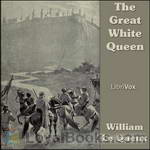 The Great White Queen
The Great White Queen
How to describe this book? In a word – savage. For those regular Le Queux mystery listeners, this book is a step in a different direction by the author. The book starts out like most Le Queux. Our hero, Richard Scarsmere, befriends an individual (Omar) at an English boarding school who turns out to be an African prince from a kingdom called Mo. Omar receives a visit from one of his mother’s trusted advisers. His mother, the Great White Queen, seeks him to return home immediately. Omar convinces Scarsmere to return to Africa with him since there is little opportunity awaiting him in London. What follows is a tale of deceit, treachery, barbarity, and mystery. | |
By: William Paley (1743-1805) | |
|---|---|
 Natural Theology
Natural Theology
In this early nineteenth-century classic, William Paley assesses how our understanding of nature reflects characteristics of its creator. First published in 1802, the book went through more than twenty editions, remains in print, and is still a reference point in the ongoing conversation about evolution or creation as the better explanation for the appearance of order and design in our universe. - Summary by Barry Ganong | |
By: William Ruschenberger (1807-1895) | |
|---|---|
 The Elements of Botany
The Elements of Botany
The Elements of Botany is one of seven in a Series of First Books of Natural History Prepared for the Use of Schools and Colleges. It is a succinct little textbook that presents a solid introduction to plant science. | |
 The Elements of Entomology
The Elements of Entomology
The Elements of Entomology is one of seven in a Series of First Books of Natural History Prepared for the Use of Schools and Colleges. It is a succinct little textbook from 1845 presents an introduction to entomology. The author was a surgeon in the U.S. Navy and president of the Academy of Natural Sciences. | |
 Elements of Mammalogy
Elements of Mammalogy
The Elements of Mammalogy is one of seven in a Series of First Books of Natural History Prepared for the Use of Schools and Colleges. This succinct little textbook from 1845 presents an introduction to mammalogy. The information, albeit not current, is still interesting and of use as a general overview of mammal biology. The classification of mammals has changed considerably since this time. The author was a surgeon in the U.S. Navy and president of the Academy of Natural Sciences. | |
 Elements of Ornithology
Elements of Ornithology
The Elements of Ornithology is one of seven in a Series of First Books of Natural History Prepared for the Use of Schools and Colleges. This succinct little textbook from 1845 presents an introduction to ornithology. The information, albeit not current, is still interesting and of use as a general overview of bird biology and classification. The author was a surgeon in the U.S. Navy and president of the Academy of Natural Sciences. | |
 Elements of Geology
Elements of Geology
Elements of Geology is one in a Series of First Books of Natural History Prepared for the Use of Schools and Colleges. This succinct little textbook from 1846 presents an introduction to geology. The information, albeit not current, is still interesting and of use as a general overview of the subject as well as interesting look into the period. Please note that some of the information has changed considerably since this time. The author was a surgeon in the U.S. Navy and president of the Academy of Natural Sciences. - Summary by Amy Gramour | |
 Elements of Anatomy and Physiology
Elements of Anatomy and Physiology
The Elements of Anatomy and Physiology is one in a Series of First Books of Natural History Prepared for the Use of Schools and Colleges. This succinct little textbook from 1852 presents an introduction to the workings of the human body. The information, albeit not current, is still interesting and of use as a general overview of the subject as well as interesting look into the period. Please note that some of the information may have changed considerably since this time. The author was a surgeon in the U.S. Navy and president of the Academy of Natural Sciences. - Summary by A. Gramour | |
By: William T. Hornaday (1854-1937) | |
|---|---|
 Extermination of the American Bison
Extermination of the American Bison
The American bison (Bison bison), also commonly known as the American buffalo, is a North American species of bison that once roamed the grasslands of North America in massive herds, became nearly extinct by a combination of commercial hunting and slaughter in the 19th century and introduction of bovine diseases from domestic cattle. William T. Hornaday’s advocacy is credited with preserving the American bison from extinction. This book, originally published in 1887, gives Mr. Hornaday's evidence of the Bison's impending extinction. (Adapted from Wikipedia by Ann Boulais) | |
By: William Walker Atkinson (1862-1932) | |
|---|---|
 Memory: How to Develop, Train and Use It
Memory: How to Develop, Train and Use It
An in-depth series of chapters devoted to the use of our memory system; as the title suggests, how to develop our memory system, how to train it to improve it, and how to make the best use of it in our everyday lives, and to improve our positions in life. This is not intended to be a series of chapters to impress friends and colleagues, nor to play 'tricks' on others, rather it is for the betterment of individuals in whatever walk of life in which they may be involved by training and using their memory toward that end. | |
By: Winfield Hazlitt Collins (1868-1927) | |
|---|---|
 Domestic Slave Trade Of The Southern States
Domestic Slave Trade Of The Southern States
This 1904 history of slavery in the southeastern United States reflects the state of knowledge at that time, of course. The text contains so many extensive quotations that it was unfeasible to indicate them as quotes in reading the text. The author was a professor of history and English at Claremont College, a North Carolina school that closed in 1917. A resource of more current thinking may be had at the well-regarded 1988 Dictionary Of Afro-American Slavery. - Summary by David Wales | |
By: Winthrop Packard (1862-1943) | |
|---|---|
 Wildwood Ways
Wildwood Ways
American naturalist, Winthrop Packard, takes us on a journey among the wild woods and ponds alerting us to their many inhabitants. He points out the birds, hornets, muskrat and mink and their habitat, particularly during the New England winter, with free-flowing narrative that is both informative and entertaining, sometimes dramatic and sometimes poetic. - Summary by Larry Wilson | |
 Wood Wanderings
Wood Wanderings
American naturalist, Winthrop Packard, takes us on a wandering journey into the woods alerting us to the many inhabitants and their habitat. He points out the birds, squirrels, woodchucks, and the variety of trees to be found particularly during the New England autumn, with free flowing narrative that is both informative and entertaining, sometimes dramatic and sometimes poetic - Summary by Larry Wilson | |
By: Woods Hutchinson | |
|---|---|
 A Handbook of Health
A Handbook of Health
The Woods Hutchinson Health Series, A HANDBOOK OF HEALTHBy Woods Hutchinson, A. M., M. D. PREFACE Looking upon the human body from the physical point of view as the most perfect, most ingeniously economical, and most beautiful of living machines, the author has attempted to write a little handbook of practical instruction for the running of it. And seeing that, like other machines, it derives the whole of its energy from its fuel, the subject of foods--their properties, uses, and methods of preparation--has been gone into with unusual care... | |
 The Child's Day
The Child's Day
The Child's Day, The Woods Hutchinson Health SeriesBy Woods Hutchinson, A.M., M.D. FOREWORD If youth only knew, if old age only could! lamented the philosopher. What is the use, say some, of putting ideas about disease into children's heads and making them fussy about their health and anxious before their time? Precisely because ideas about disease are far less hurtful than disease itself, and because the period for richest returns from sensible living is childhood--and the earlier the better. It is abundantly worth while to teach a child how to protect his health and build up his strength; too many of us only begin to take thought of our health when it is too late to do us much good... | |
By: Worthington George Smith (1835-1917) | |
|---|---|
 Mushrooms and Toadstools (Third Edition)
Mushrooms and Toadstools (Third Edition)
This is a useful, but not comprehensive description of both edible and poisonous fungi found in Great Britain. Although the book is well illustrated, the descriptions are well done and useful. - Summary by Larry Wilson | |